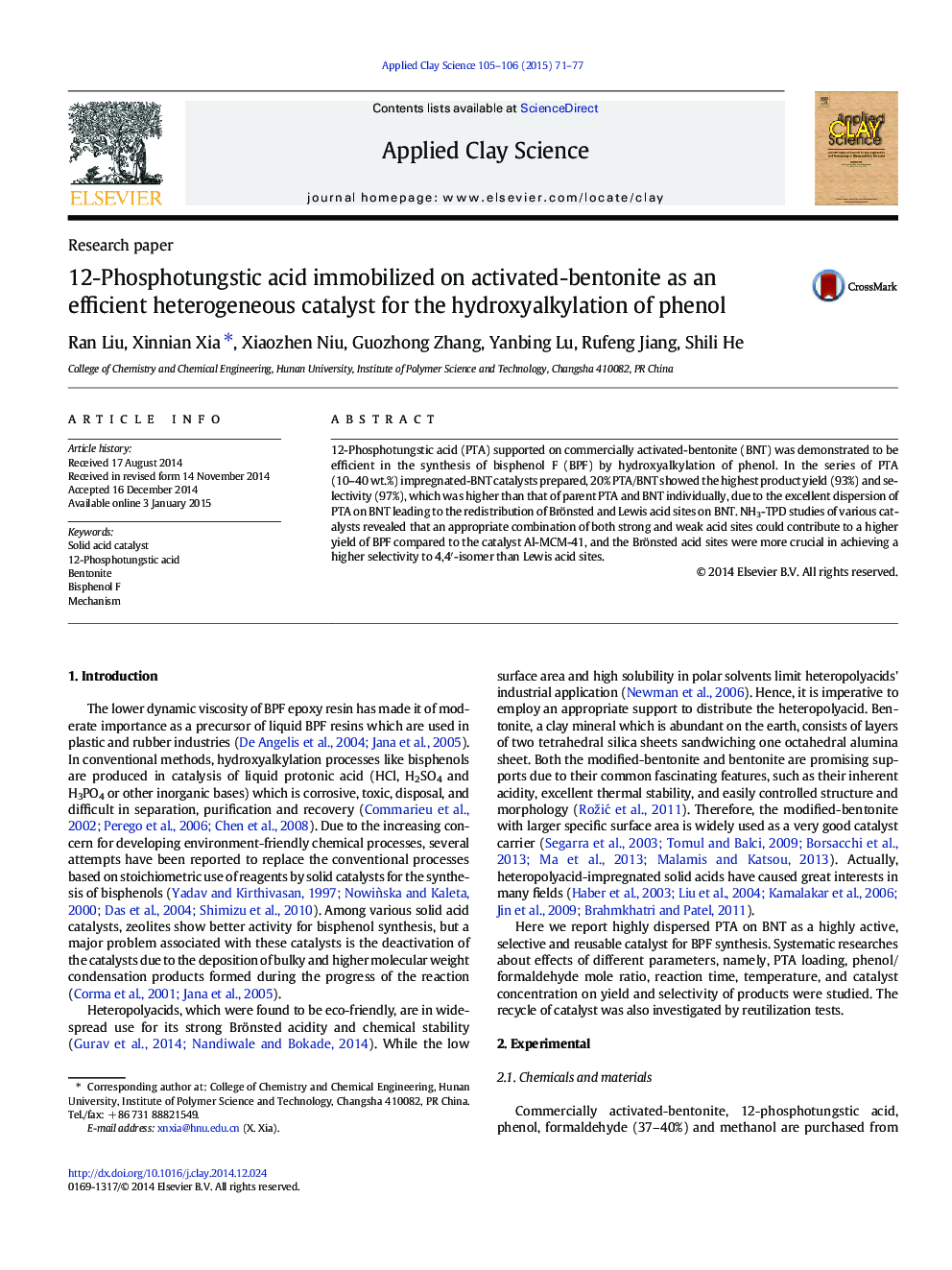| Article ID | Journal | Published Year | Pages | File Type |
|---|---|---|---|---|
| 1694562 | Applied Clay Science | 2015 | 7 Pages |
•Various solid acid catalysts were prepared for the synthesis of bisphenol F.•PTA/BNT was efficient in catalyzing phenol.•Both strong and weak acid sites were essential in the reaction.•A plausible formation mechanism of BPF (4,4′-isomer) was established.
12-Phosphotungstic acid (PTA) supported on commercially activated-bentonite (BNT) was demonstrated to be efficient in the synthesis of bisphenol F (BPF) by hydroxyalkylation of phenol. In the series of PTA (10–40 wt.%) impregnated-BNT catalysts prepared, 20% PTA/BNT showed the highest product yield (93%) and selectivity (97%), which was higher than that of parent PTA and BNT individually, due to the excellent dispersion of PTA on BNT leading to the redistribution of Brönsted and Lewis acid sites on BNT. NH3-TPD studies of various catalysts revealed that an appropriate combination of both strong and weak acid sites could contribute to a higher yield of BPF compared to the catalyst Al-MCM-41, and the Brönsted acid sites were more crucial in achieving a higher selectivity to 4,4′-isomer than Lewis acid sites.
Graphical abstract12-Phosphotungstic acid immobilized on the surface of commercial activated-bentonite as an efficient heterogeneous catalyst for the hydroxyalkylation of phenol.Figure optionsDownload full-size imageDownload as PowerPoint slide
